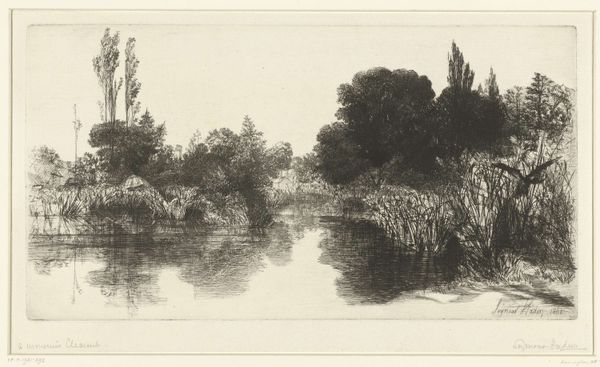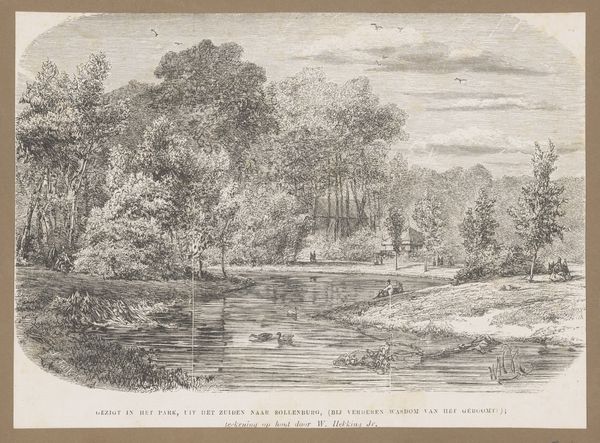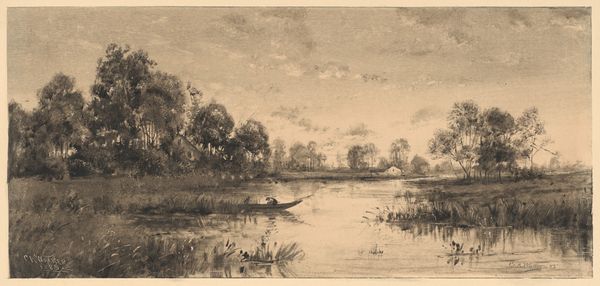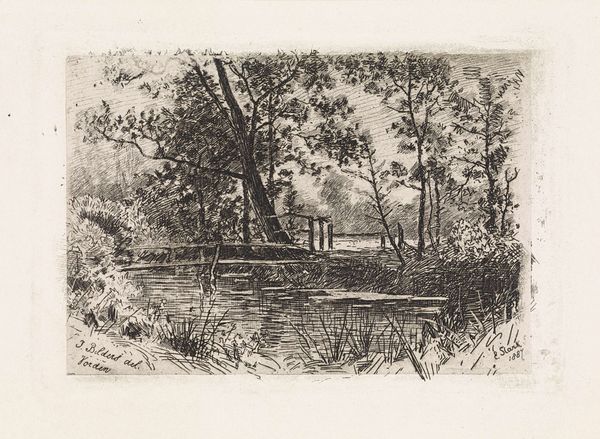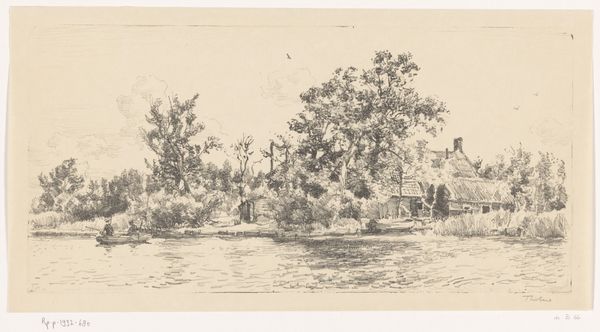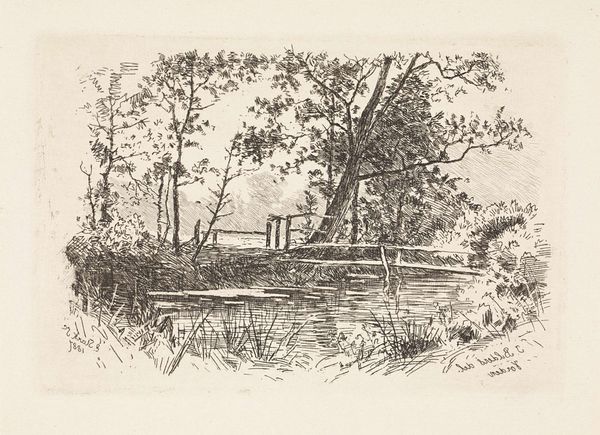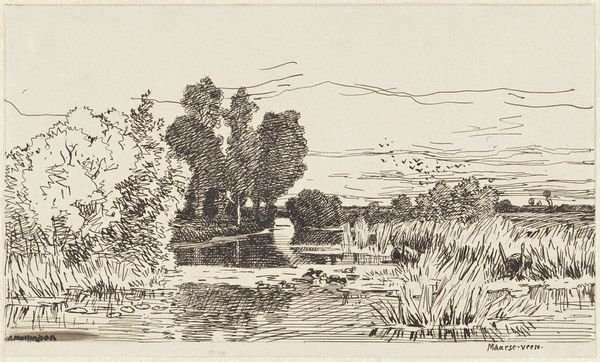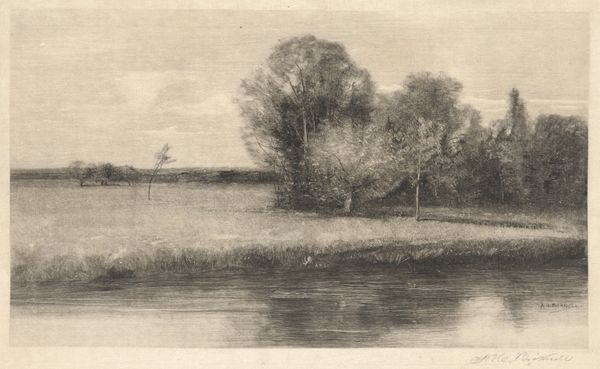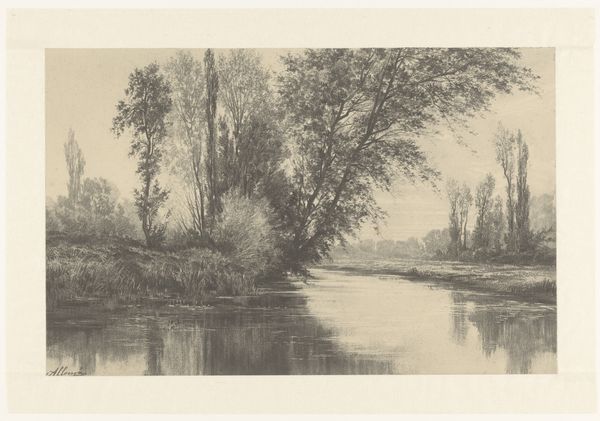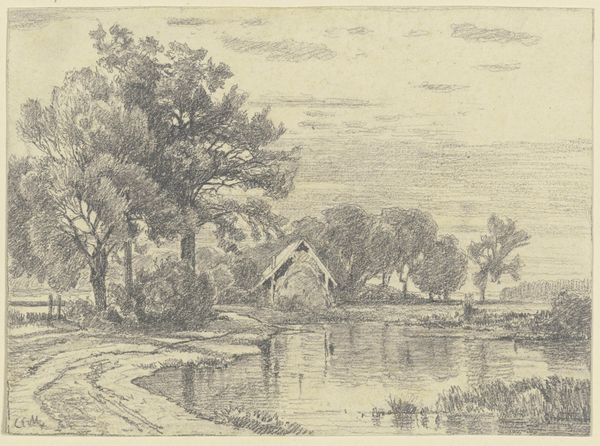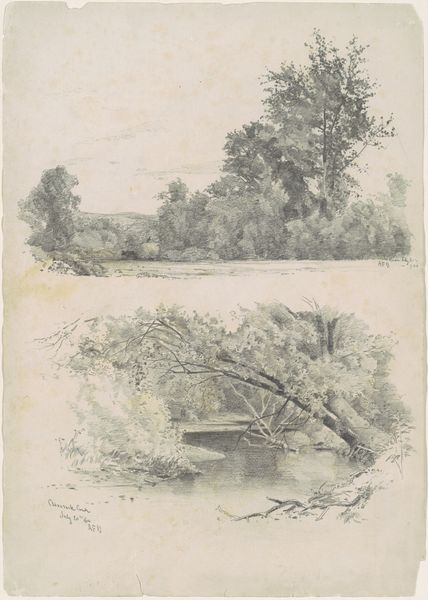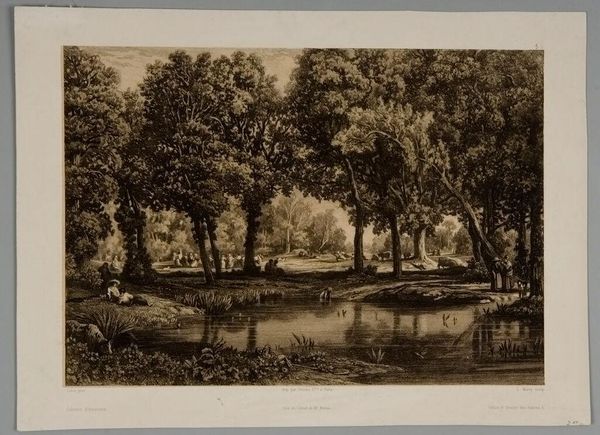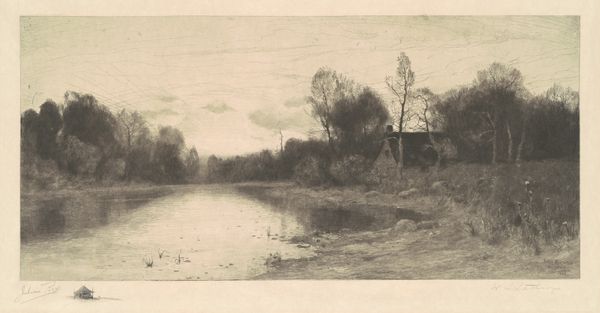
Dimensions: height 151 mm, width 85 mm, height 85 mm, width 139 mm
Copyright: Rijks Museum: Open Domain
Editor: Here we have "Twee ezels en de rivier de Dumdrum", or "Two Donkeys and the River Dumdrum," an etching by Sir Francis Seymour Haden from 1863. I find the contrast between the dark, dense foliage on the left and the relatively open, sunlit space on the right intriguing. What are your thoughts on its formal aspects? Curator: The composition, delineated with remarkable intricacy, presents a clear division. Observe how the artist's utilization of light and shadow models a kind of dialectic within the frame. Do you notice how the darker areas seem to confine, while the lighter spaces suggest expansion and openness? Editor: Yes, I see it now. It’s like the river is acting as a bridge or a transition between those two distinct spaces. The rendering of the water is also quite fascinating. Curator: Precisely. The handling of line, its varying thickness and direction, serves to animate the surface of the water, thereby introducing an element of dynamic contrast to the stillness of the surrounding landscape. Also, the strategic use of hatching builds up the tonal range. How do you think this impacts the overall mood? Editor: It creates a certain level of tension. Like there is something more there, concealed beneath the surface, demanding further visual engagement. Curator: An astute observation. Furthermore, examine how the spatial organization compels the eye to oscillate between foreground and background, thereby enriching the experience. It avoids the purely mimetic by calling attention to its construction as image. Editor: So, beyond just representing a landscape, the artist uses these techniques to actively engage the viewer? Curator: Indeed. The artwork is not simply representational but functions as a space for visual contemplation, engaging us through the orchestration of formal elements, of line and light. Editor: That's a perspective that hadn't occurred to me. I see now how the formal qualities shape the work beyond its subject matter. Curator: And it is precisely through a close consideration of these qualities that we begin to grasp the artistic choices inherent in its construction and appreciate its impact.
Comments
No comments
Be the first to comment and join the conversation on the ultimate creative platform.
